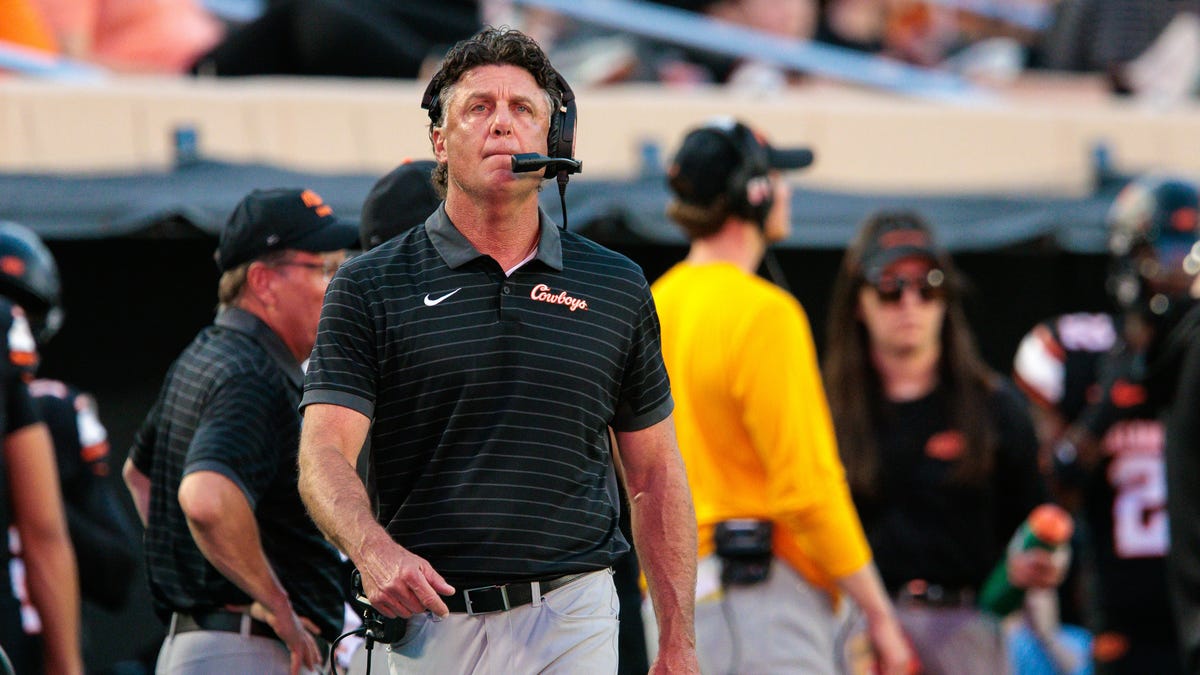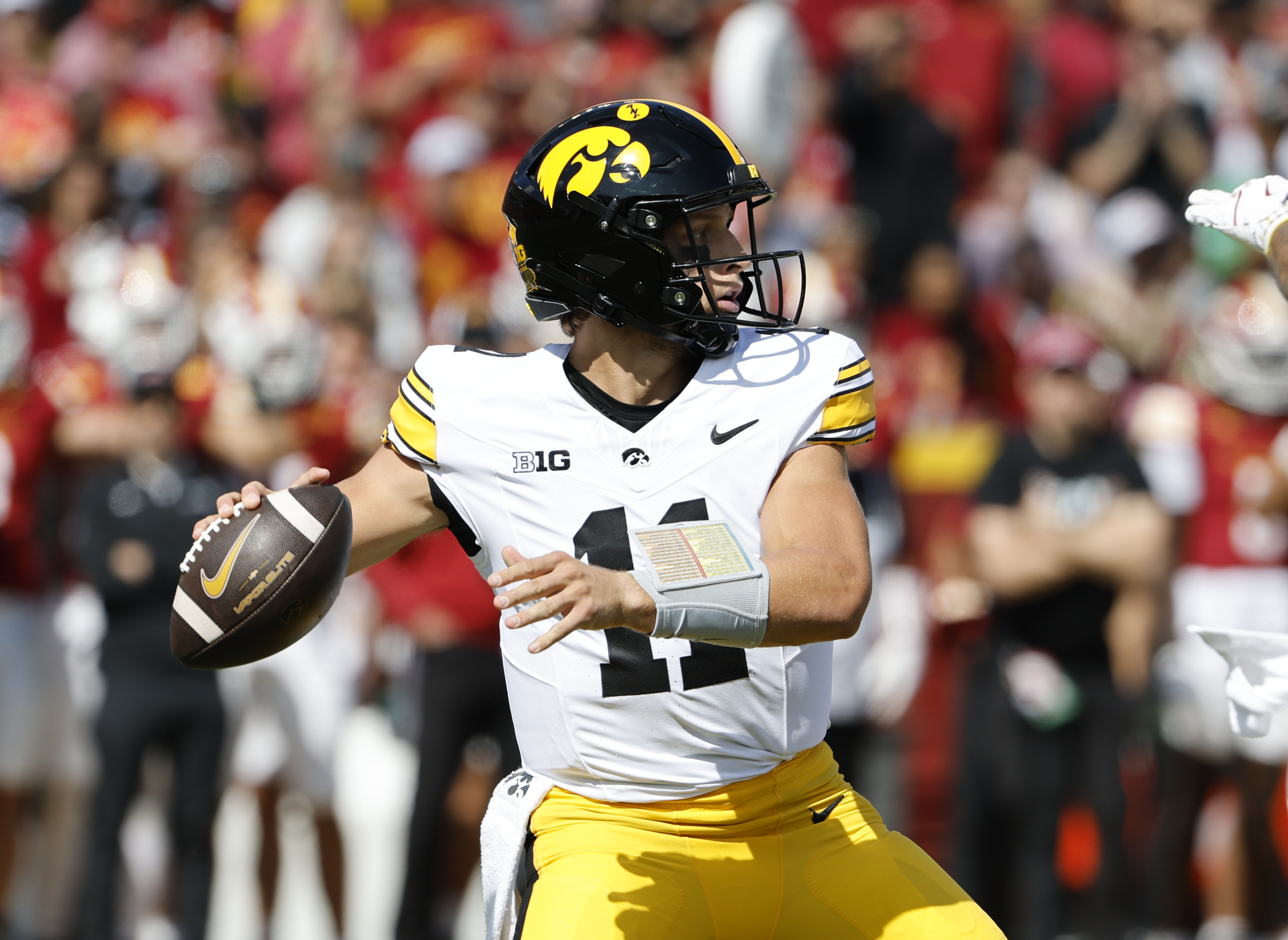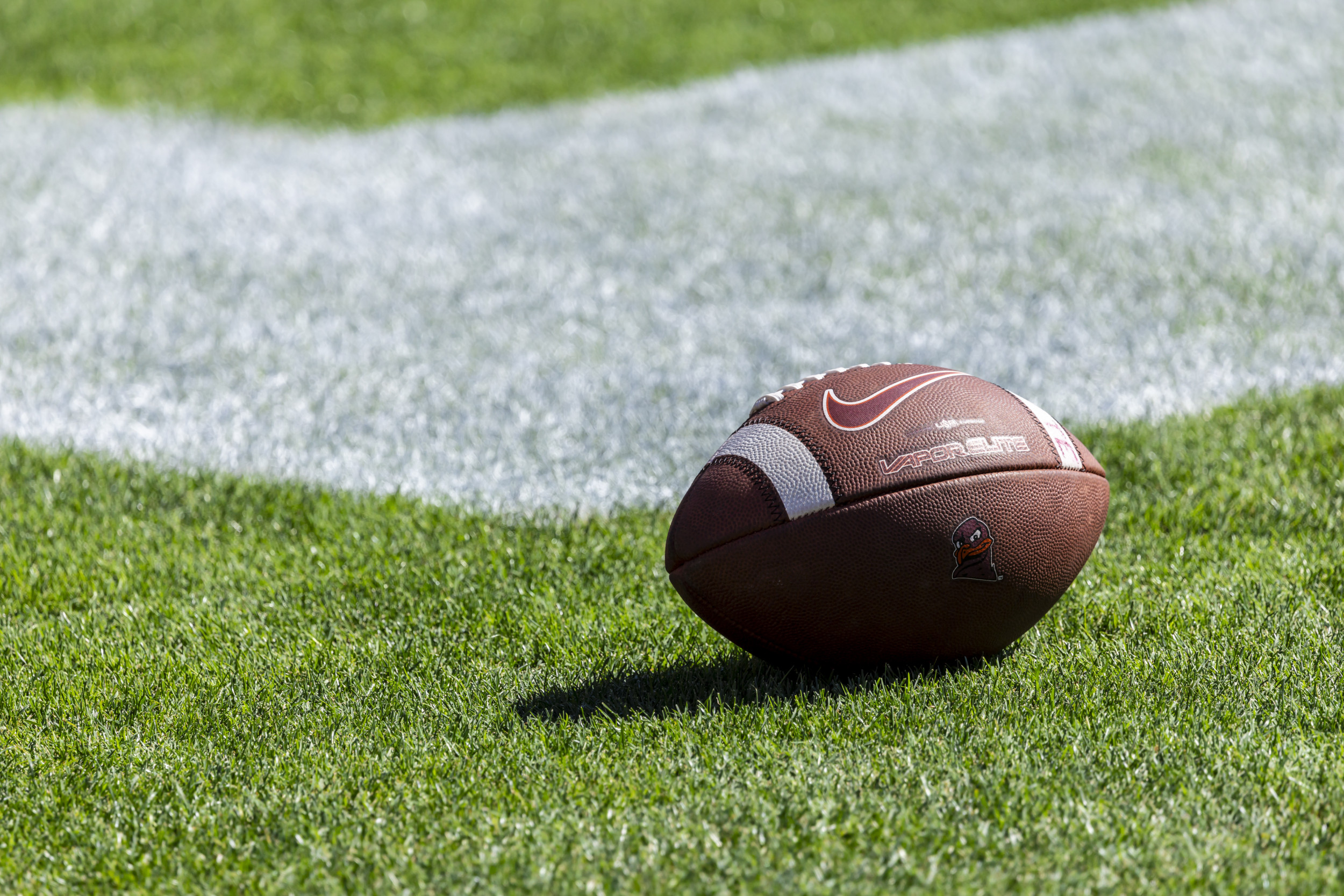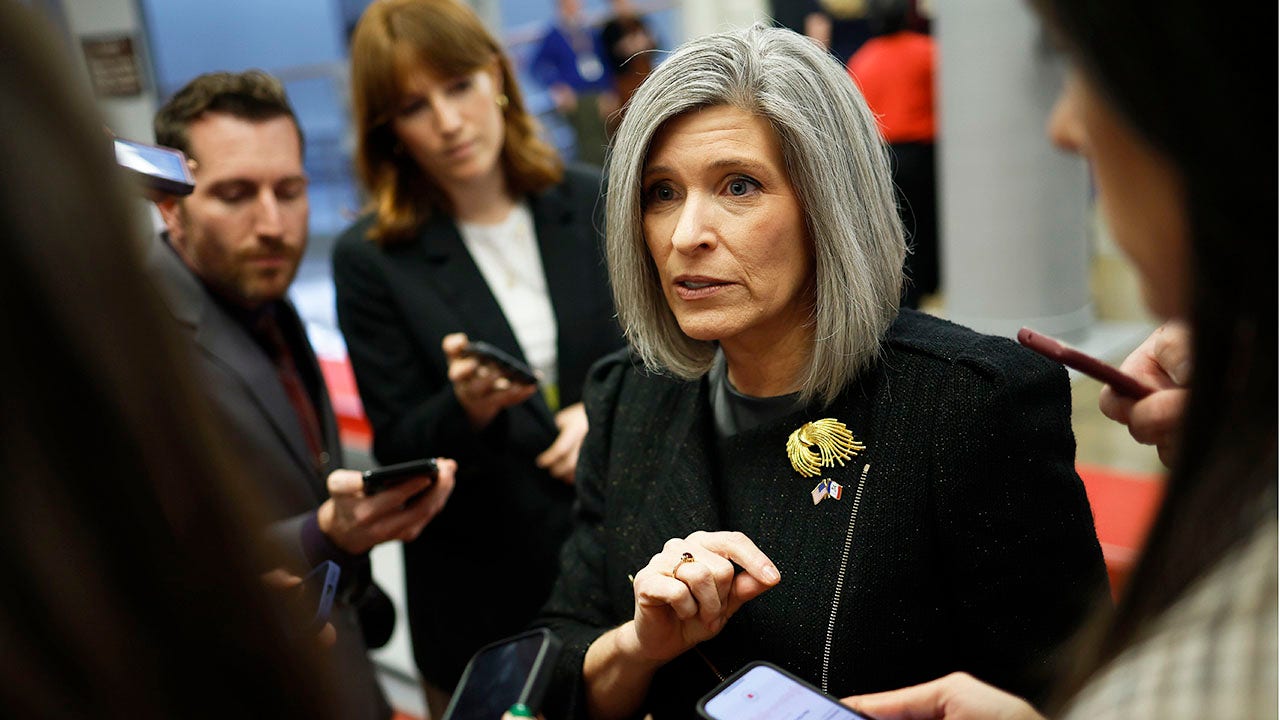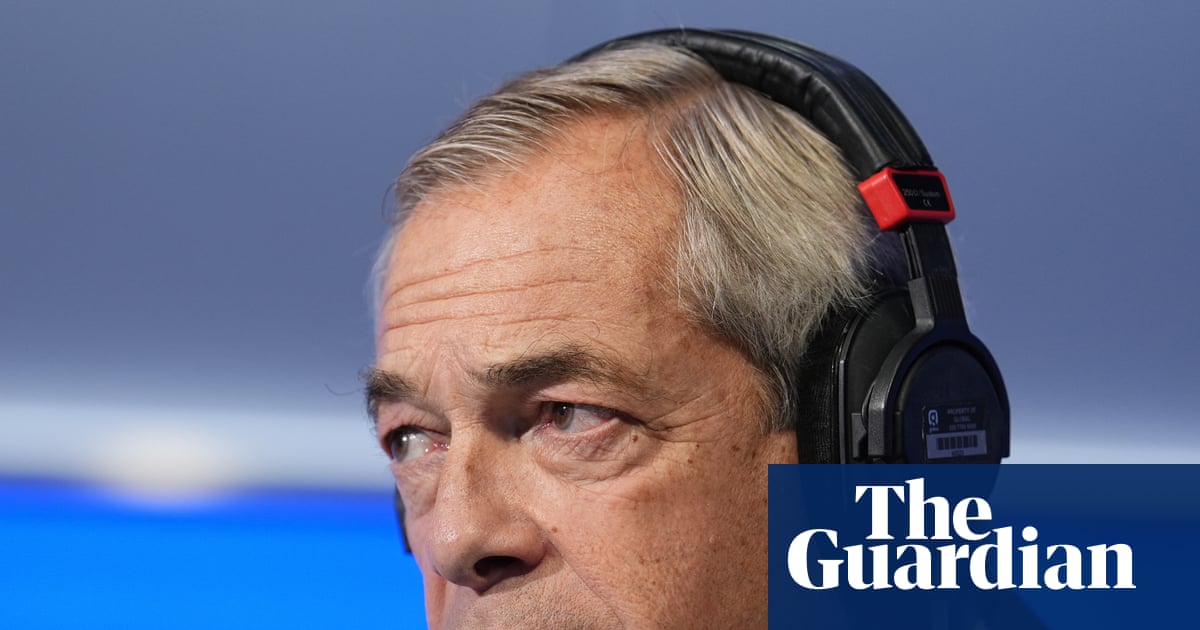Culture
Mandel’s Final Thoughts: Kirby Smart’s Georgia defense unleashes havoc on Texas offense

And now, 20 Final Thoughts from a college football weekend filled with wild comebacks, big-time performances and one heck of a mess to clean up off the field in Austin.
1. All the gentlemen who made picks on ESPN’s “College GameDay” set Saturday morning said No. 1 Texas would beat No. 5 Georgia that night. It was a perfectly reasonable prediction based on how both teams had looked in the weeks leading up to their showdown.
Unfortunately for them, past performance does not guarantee future results, especially when college players are involved.
2. In front of a stadium-record 105,215 fans, Kirby Smart’s Bulldogs (6-1, 4-1 SEC) unleashed the most havoc-wreaking defensive performance of the season in a 30-15 win. It got so bad, so fast for Texas (6-1, 2-1 SEC), trailing 20-0 in the second quarter, that Steve Sarkisian briefly benched starting quarterback Quinn Ewers for Arch Manning, only to go back to Ewers after two series. Neither had a chance, given the Horns offensive line had no answers for Georgia pass rushers Jalon Walker (three sacks, four QB hurries), Mykel Williams (two sacks) and Damon Wilson II (one strip-sack).
Free, daily sports updates direct to your inbox.
Free, daily sports updates direct to your inbox.
Sign Up
This was precisely the Georgia juggernaut many envisioned when it was designated the preseason No. 1 team and again when it blitzed Clemson 34-3 in the season opener. That makes it a mystery where that team went in between. It was only three weeks ago that the Dawgs fell behind Alabama 30-7 at halftime and only a week ago that they allowed 31 points to Mississippi State. But it doesn’t matter now, does it?

GO DEEPER
UGA’s Smart on overturned pass interference call: ‘They tried to rob us’
3. Had Texas come back and won, we might have had a ferocious officiating scandal. Late in the third quarter, with Georgia up 23-8, Horns cornerback Jahdae Barron picked off Carson Beck near the sideline and ran it back to the Georgia 9-yard line. Officials initially negated it with a horrendous pass-interference call, at which point Texas students began pelting the field with objects. After a five-minute delay, the officials huddled and eventually, picked up the flag, eliciting much confusion, because defensive pass interference is not reviewable by replay. But this was decided on the field, not in the booth. Ewers threw a touchdown two plays later, only for Beck and Georgia to answer immediately.

Trevor Etienne scored three rushing touchdowns to lead Carson Beck, right, and the Georgia Bulldogs past No. 1 Texas on Saturday. (Tim Warner / Getty Images)
This did not comfort Smart, who said after the game, “Now, we’ve set a precedent that (if) you throw a bunch of stuff on the field and endanger athletes, you can get your call reversed.” To be clear: The final call was the correct one. But the SEC had better act decisively before this becomes a thing.

GO DEEPER
Steve Sarkisian created Texas QB controversy with Arch Manning, even if he says he didn’t
4. Georgia may well turn around and lay an egg against Florida in a couple of weeks, but it can afford it. With two wins over current top-10 teams, Georgia has ample margin of error between now and the College Football Playoff. That said, Beck remains cause for concern. He threw three interceptions (two in the first quarter) and finished 23 of 41 for just 175 yards. Beck, who has thrown eight picks in his past four games, is not as comfortable as he was last season when he had ever-reliable targets Brock Bowers and Ladd McConkey.

GO DEEPER
The fuel Georgia found to knock off No. 1 and flip a switch on its season
I’d still much rather be in Georgia’s shoes than …
5. That Alabama first-half explosion against Georgia on Sept. 28 now looks like an aberration for both sides. No. 11 Tennessee (6-1, 3-1 SEC) salvaged its season and put No. 7 Alabama’s (5-2, 2-2 SEC) season on the brink of disaster with a 24-17 win at Neyland Stadium. Tennessee’s defense has been stellar all season, but this was its masterpiece. Tide star Jalen Milroe completed a season-low 55.6 percent of his passes, threw two interceptions and ran for just 11 yards. Meanwhile, previously struggling Vols quarterback Nico Iamaleava had his signature performance to date, setting up one go-ahead touchdown with a 55-yard pass to Dont’e Thornton Jr. and throwing a 16-yard score to Chris Brazzell II after Alabama reclaimed the lead.

GO DEEPER
Tennessee comes alive to spark SEC hope, put Alabama Playoff chances in peril: Takeaways
And, of course, no Tennessee win would be complete without a big Dylan Sampson day. The Vols’ star running back carried 26 times for 139 yards and two TDs.

GO DEEPER
Tennessee proved against Alabama it’s not a one-hit wonder under Josh Heupel
6. This is quickly becoming a nightmare first season for Alabama coach Kalen DeBoer. First, he lost to Vanderbilt. Now he’s on the wrong end of the Tide’s earliest second loss since Nick Saban’s first season, in 2007. And goodness, was his team undisciplined. Alabama committed 15 penalties, including a personal foul on receiver Kendrick Law that turned a late fourth-and-7 into a fourth-and-22. The Tide still got the ball back with 1:28 left and a chance to send it to overtime, but Milroe, whose decision-making lately has been shaky, threw a ball into coverage that Will Brooks picked off.

GO DEEPER
Rexrode: Kalen DeBoer’s Alabama program lacks the discipline, mystique of Nick Saban era
Milroe, like his coach, has had better days.

GO DEEPER
Smith: Alabama’s season isn’t over, but it’s time for some hard truths
7. While Alabama falters, rival LSU continues to surge. The eighth-ranked Tigers (6-1, 3-0 SEC) went on the road and hammered Arkansas (4-3, 2-2 SEC) 34-10. Freshman Caden Durham (21 carries, 101 yards, three TDs) had his second 100-yard output in three games. But the face of the Tigers this season is remarkable linebacker Whit Weeks. The sophomore had 18 tackles against Ole Miss last week. This week, he turned the entire game with LSU leading 16-10 when he rushed the passer, tipped Taylen Green’s pass into the air, caught the ball and returned it to the 2.
There’s no top-five showdown in the SEC next week, but the stakes are no lower. LSU visits No. 14 Texas A&M (6-1, 4-0 SEC), which beat Mississippi State 34-24. The LSU-A&M winner will be alone in first place in the 16-team conference.

GO DEEPER
College Football Playoff 2024 projections: Tennessee knocks Alabama out of bracket
8. Oklahoma athletic director Joe Castiglione said he gave third-year coach Brent Venables a raise and extension last summer as a sign of “stability and strength” entering the SEC. All it did was make it harder to get out of a problematic situation.
South Carolina (4-3, 2-3 SEC) went to Norman and raced to a 32-3 halftime lead — the largest of any OU opponent in that stadium in 27 years — in handing the Sooners (4-3, 1-3 SEC) a humiliating 35-9 defeat. Oklahoma has scored five offensive touchdowns during its past four games. Venables’ surprise decision during a Sept. 21 loss to Tennessee to bench decorated quarterback Jackson Arnold for true freshman Michael Hawkins Jr. initially provided some hope, but OU went back to Arnold on Saturday after Hawkins committed turnovers on his first three series.
Injuries have decimated the Sooners’ receiving corps, but that’s not the only problem. Venables, who went 6-7 and 10-3 in his first two seasons, is now 11-11 in conference games.
9. Illinois honored the 100th anniversary of Red Grange’s famous six-TD game against Michigan by wearing 1924-style uniforms. Michigan played its part by showcasing a 1924-caliber passing game. The Wolverines’ third attempt at a starting quarterback in Jack Tuttle did little to reverse their fortunes. The No. 22 Illini (6-1, 3-1 Big Ten) won 21-7, marking the second time in three seasons Bret Bielema’s team has won six of its first seven games, and its fan base seems galvanized. A sold-out Memorial Stadium got to see Illinois’ first win over the Wolverines since 2009.

GO DEEPER
Meek: For ‘disappointed’ Sherrone Moore, challenges of starting over at Michigan hitting hard
Meanwhile, Michigan (4-3, 2-2 Big Ten) scored its fewest points in a decade. That’s the best it could muster following an off week.
10. As impressive as Indiana looked during its 6-0 start, I was reticent to use “Indiana” and “Playoff” in the same sentence. Not anymore. The 16th-ranked Hoosiers (7-0, 4-0 Big Ten) smacked Nebraska 56-7, despite star quarterback Kurtis Rourke leaving with a thumb injury. The Huskers (5-2, 2-2 Big Ten) aren’t Oregon, but they did enter the game at 5-1 with a top-10 defense. That didn’t stop IU from averaging nearly 8 yards per play. The Indiana defense produced five turnovers, including three interceptions from Nebraska quarterback Dylan Raiola.

GO DEEPER
Time to take Indiana seriously? Hoosiers make case as Nebraska’s misery vs. ranked teams continues
Rourke’s injury seemed minor, and Indiana now plays two more middling opponents, Washington and Michigan State, before a Nov. 9 home date with Michigan. It could be the biggest game in Bloomington in more than a half-century. According to The Athletic’s model, the Hoosiers now have a 61 percent chance to make the Playoff.

GO DEEPER
Dochterman: Indiana is no Cinderella. The Hoosiers look like they can crash the CFP and compete
11. Lincoln Riley forever will get credit for developing Baker Mayfield, Kyler Murray, Jalen Hurts and Caleb Williams. But it now seems those quarterbacks helped mask Riley’s head-coaching shortcomings.
USC’s coach has lost nine of his past 14 games, and somehow, Saturday’s 29-28 defeat at Maryland (4-3, 1-3 Big Ten) was the worst one yet. The Terps were winless in the Big Ten, having lost 37-10 at home to Northwestern eight days earlier. And the Trojans (3-4, 1-4 Big Ten) led 28-22 with two minutes left, facing a fourth-and-1 at the Maryland 24, but rather than trying to get 1 yard, Riley opted to attempt a 41-yard field goal, which the Terps blocked. They then drove for the go-ahead touchdown and stopped USC’s last-ditch drive.
Riley admittedly has suffered some tough luck. All four of USC’s losses came down to the final possession. But this one should have never been a close game to begin with.

GO DEEPER
Morales: USC has invested heavily in Lincoln Riley and his staff. Where are the results?
12. Sixth-ranked Miami (7-0, 3-0 ACC) is doing its best to make every week an adventure. The Canes did not need another last-second escape this week at Louisville (4-3, 2-2 ACC). But Cardinals quarterback Tyler Shough (31 of 51 for 342 yards, four TDs, zero INTs) kept pace with Miami star Cam Ward (21 of 32, 319 yards, four TDs, zero INTs) for much of the day until the Canes wrapped up a 52-45 victory. Miami’s defense has been an issue for three straight games, but Ward, who should remain near the top of Heisman Watch lists, is the kind of big-time QB who can help mask deficiencies. The question is, can he do it all the way to an ACC championship?

GO DEEPER
Miami survives Louisville in yet another thrilling win
13. No. 9 Iowa State (7-0, 4-0 Big 12) and No. 13 BYU (7-0, 4-0 Big 12) are defying the prevailing theory that the Big 12 is wide open. Both remain perfect, thanks to game-winning drives by their quarterbacks and wins by identical scores.
Trailing 35-31 to visiting Oklahoma State (3-4, 0-4 Big Ten) and with his team stuck at its own 38 with fewer than 30 seconds left, BYU’s Jake Retzlaff scrambled 27 yards and two plays later, hit receiver Darius Lassiter for a 35-yard touchdown to prevail 38-35 late Friday night. Retzlaff is hardly a “wow” passer, but he’s a gamer. And BYU’s offense is more explosive now that running backs LJ Martin (20 carries, 120 yards, two TDs) and Hinckley Ropati (six carries, 47 yards) are both healthy.

GO DEEPER
BYU remains undefeated with stunning late TD vs. Oklahoma State
And Iowa State found itself in a dogfight at home against visitor UCF (3-4, 1-3 Big 12), which ran for 354 yards against the Cyclones. Trailing 35-30 with 1:47 left, Rocco Becht led his team 80 yards in 11 plays, then converted a two-point conversion for the win. Iowa State is 7-0 for the second time in program history.

GO DEEPER
No. 9 Iowa State rallies to beat UCF, remain undefeated
14. Much to the chagrin of its many haters, Colorado (5-2, 3-1 Big 12) is off to just its second 5-2 start since 2005 following a 34-7 rout at Arizona (3-4, 1-3). The Buffs rebounded from last week’s heartbreaking home loss to Kansas State with the best defensive performance of the two-year Deion Sanders era, notching six sacks and three turnovers. Arizona quarterback Noah Fifita threw for just 138 yards.

GO DEEPER
Deion ribs Obama for his CU comments: ‘I heard what he said’
CU will play for a bowl berth next week against Cincinnati, which was always the primary goal for Sanders in Year 2. But at this point, he should aim higher than that.
15. In its first game away from home since Sept. 14, No. 12 Notre Dame (6-1) held Georgia Tech’s top-25 rushing offense to 64 yards on 29 attempts in an easy 31-13 win at Mercedes Benz Stadium. Marcus Freeman even pulled out a fake punt and a fake field goal (and both worked).
Before the season, it seemed possible the Irish might not face many ranked opponents, but they’re 2-0 in those games so far (at Texas A&M and against Louisville) and another Top 25 foe awaits next week at another NFL venue: undefeated Navy at Met-Life Stadium.

GO DEEPER
Notre Dame takeaways: Irish slow down Georgia Tech’s rushing attack, cruise to easy win
16. Embattled Florida coach Billy Napier refuses to go quietly into the night. In the Gators’ first game since losing veteran quarterback Graham Mertz for the season with an ACL injury, they rode a pair of true freshmen to a 48-20 rout of Kentucky (3-4, 1-4 SEC). Five-star quarterback DJ Lagway completed seven passes, but five of them went for 40-plus yards, and running back Jadan Baugh, making his first career start, ran for 106 yards and a program record-tying five touchdowns.
After an off week, Florida (4-3, 2-2 SEC) begins its long-awaited gauntlet of Georgia, Texas and LSU back-to-back-to-back. So it’s good for Napier he won this one.

GO DEEPER
Billy Napier and Florida won a game they couldn’t lose, but a rugged path is still ahead
17. Auburn (2-5, 0-4 SEC) is so beatable these days that Missouri quarterback Brady Cook had time to leave in the first quarter, go to the hospital, get an MRI on his ankle, come back and lead 19th-ranked Mizzou (6-1, 2-1 SEC) to two fourth-quarter touchdowns and win 21-17. Cook hit Mookie Cooper for a 78-yard pass to set up a touchdown that cut Auburn’s lead to 17-14, then drove his team 95 yards for the go-ahead score. Cook threw for more yards in a quarter-plus (194) than Auburn quarterback Payton Thorne did the entire game (176). Looking to keep its CFP hopes alive, Mizzou visits Tuscaloosa next week to face a desperate and vulnerable Alabama team.
18. Cincinnati (5-2, 3-1 Big 12) quietly has won three of its first four conference games, with an overtime loss in the other, after shutting down visiting Arizona State 24-14. Second-year coach Scott Satterfield did not engender confidence with his 3-9 debut last season, but the program, which won at least nine games five straight years under the departed Luke Fickell, seems to have stabilized. The Sun Devils (5-2, 2-2 Big 12) missed quarterback Sam Leavitt due to a rib injury. Former Georgia Tech and Nebraska quarterback Jeff Sims was ineffective. Also: Coach Kenny Dillingham was so peeved about missing two field-goal attempts that he vowed to hold an open kicker tryout on Monday.

GO DEEPER
ASU coach Kenny Dillingham apologizes for kicking criticism
19. Michigan State coach Jonathan Smith’s first season has been expectedly rocky, but one of the sport’s most respected offensive coaches showed what he’s all about in the Spartans’ 32-20 home win over Iowa (4-3, 2-2 Big Ten). Smith’s team ran for 212 yards against the Hawkeyes’ normally stingy defense. Talented quarterback Aidan Chiles, who followed Smith from Oregon State, was a big part of the Michigan State (4-3, 2-2 Big Ten) attack with 11 carries for 51 yards. It may be too little, too late for this season, but Chiles may be part of bigger wins down the line.
20. Finally, congrats to FCS No. 2 North Dakota State for ending a five-game losing streak to No. 1 South Dakota State (5-2, 2-1 MVC) in dramatic fashion. The Bison (7-1, 4-0 MVC) trailed 9-7 for the entire second half until Cam Miller drove them 92 yards, culminating in a 20-yard touchdown to RaJa Nelson with 1:49 left. A Logan Kopp interception on the Jackrabbits’ next drive sealed a 13-9 win. The Dakota Marker returns to Fargo for the first time since 2019.
While impossible to confirm, it’s believed not one single person there suggested the game was meaningless because the FCS has a 24-team playoff.
(Top photo of Julian Humphrey: Tim Warner / Getty Images)

Culture
Test Your Memory of These Classic Books for Young Readers

Welcome to Lit Trivia, the Book Review’s regular quiz about books, authors and literary culture. This week’s tests your memory of books you may have read during your school days — specifically, the plots of much-loved novels for young readers. In the five multiple-choice questions below, tap or click on the answer you think is correct. After the last question, you’ll find links to the books.
Culture
Test Yourself on These Cartoons and Comics Adapted for the Screen

Welcome to Great Adaptations, the Book Review’s regular multiple-choice quiz about printed works that have gone on to find new life as movies, television shows, theatrical productions and more. This week’s challenge highlights cartoons and comic strips that were later adapted for the screen. Just tap or click your answers to the five questions below. And scroll down after you finish the last question for links to the books and some of their filmed versions.
Culture
I Want This Jane Kenyon Poem Read Aloud at My Funeral

You can hear a reading of this poem at the bottom of the page.
“The Pond at Dusk”: It’s a title that presents an image of calm, touched with the faintest shimmer of dread. You might picture a peaceful summer evening in the countryside somewhere, but you might also feel the tug of a somber metaphor in the word “dusk.” Night is falling, and this poem proceeds, nimbly and observantly, toward an unsentimental confrontation with death.
In one called “Twilight: After Haying” — there’s that dusk again — she writes that “the soul / must part from the body: / what else could it do?” What else indeed. This fatalism provides its own kind of solace. “The day comes at last.” The end is inevitable, inarguable, and there may be a balm in acknowledging that fact.
Not that “The Pond at Dusk” quite dispenses such consolation. It isn’t Kenyon’s style to offer homilies or lessons. Instead, she watches, with sympathetic detachment, standing back from the implications of her words and letting them ripple outward, toward the reader.
This is not the kind of nature poetry that gazes in wonder at the glories of creation, taking the world as a mirror of the poet’s ego. Kenyon parcels out her attention carefully, removing herself from the picture as rigorously as a landscape painter at her easel.
The Pond at Dusk
A fly wounds the water but the wound
soon heals. Swallows tilt and twitter overhead, dropping now and then toward
the outward–radiating evidence of food.
The green haze on the trees changes
into leaves, and what looks like smoke floating over the neighbor’s barn
is only apple blossoms.
But sometimes what looks like disaster
is disaster: the day comes at last, and the men struggle with the casket
just clearing the pews.
Listen to A.O. Scott read the poem.
THE POND AT DUSK by Jane Kenyon
-
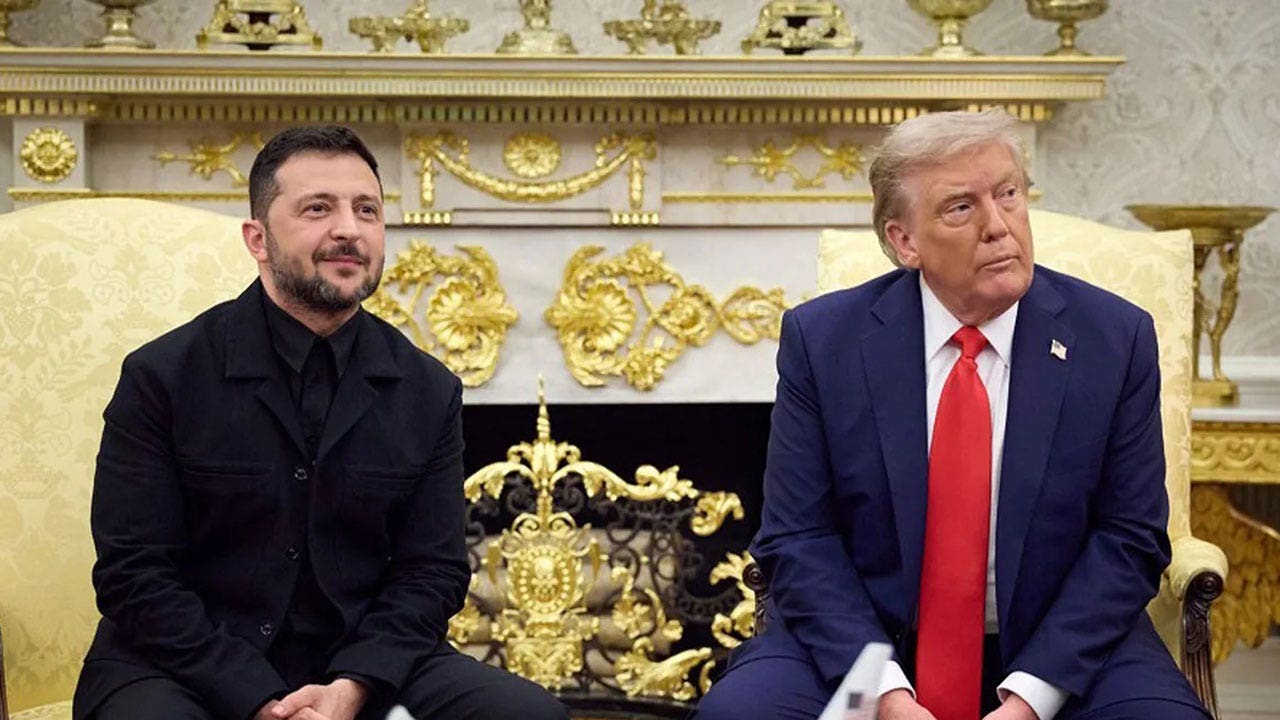
 World1 week ago
World1 week agoTrump and Zelenskyy to meet as Poland pressures NATO on no fly zone over Ukraine
-

 Technology1 week ago
Technology1 week agoNew Evite phishing scam uses emotional event invitations to target victims
-

 Health1 week ago
Health1 week agoDiabetes risk quadruples with use of popular natural remedy, study finds
-

 Politics1 week ago
Politics1 week agoHouse plans Thursday vote on government funding bill to extend spending through November
-

 Business1 week ago
Business1 week agoDisney, Universal and Warner Bros. Discovery sue Chinese AI firm as Hollywood's copyright battles spread
-

 Health1 week ago
Health1 week agoWho Makes Vaccine Policy Decisions in RFK Jr.’s Health Department?
-

 Finance3 days ago
Finance3 days agoReimagining Finance: Derek Kudsee on Coda’s AI-Powered Future
-

 Lifestyle1 week ago
Lifestyle1 week agoBobbi Brown doesn’t listen to men in suits about makeup : Wild Card with Rachel Martin
